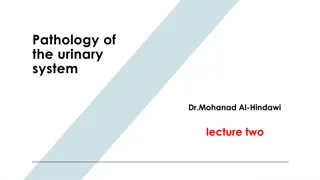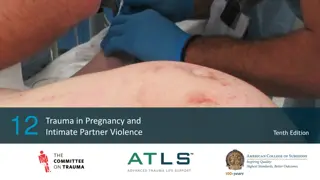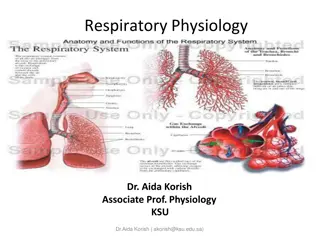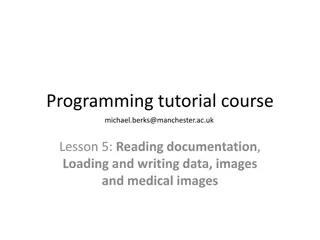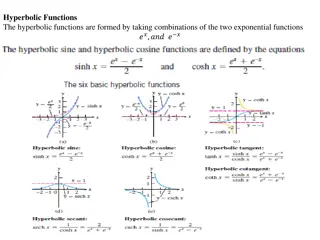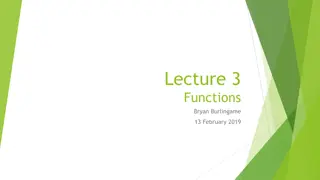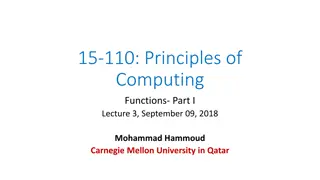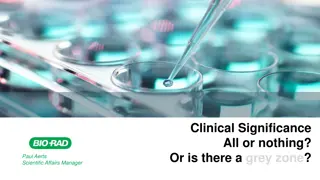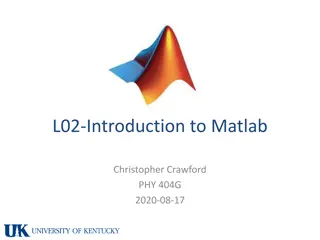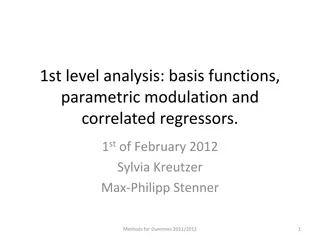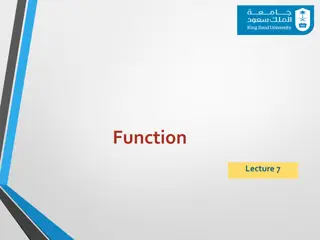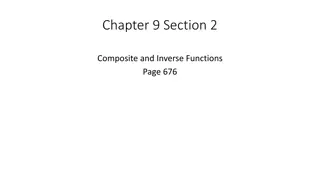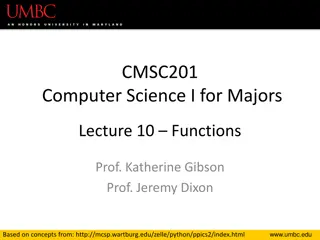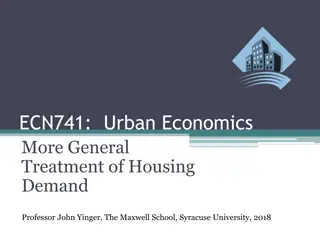Immunoglobulin Structure and Functions
In-depth look at the structure and functions of immunoglobulins, including heavy and light chain composition, domains, disulfide bonds, and fragment relationships. Explore the role of immunoglobulins in agglutination, neutralization, opsonization, and more.
Download Presentation

Please find below an Image/Link to download the presentation.
The content on the website is provided AS IS for your information and personal use only. It may not be sold, licensed, or shared on other websites without obtaining consent from the author.If you encounter any issues during the download, it is possible that the publisher has removed the file from their server.
You are allowed to download the files provided on this website for personal or commercial use, subject to the condition that they are used lawfully. All files are the property of their respective owners.
The content on the website is provided AS IS for your information and personal use only. It may not be sold, licensed, or shared on other websites without obtaining consent from the author.
E N D
Presentation Transcript
Definition: produced by plasma cells in response to an immunogen and which function as antibodies Glycoprotein molecules that are - + albumin Amount of protein globulins 1 2 Immune serum Ag adsorbed serum Mobility
GENERAL FUNCTIONSOF IMMUNOGLOBULINS Agglutination Neutralization Detoxification Opsonization Complement fixation
Composed of 4 polypeptides, two small chains called light chain and two large chains called heavy chain. The connection between the H chain and L chain is by disulfide covalent bond, the molecular weight of each L chain is 25 KD and the H chain is 50 KD and the total is about 150 KD, (this for IgG). There are two domains (functional sites) on each L chain, each domain composed of 110 A.A, so the L chain is 220 A.A and the H chain composed of 4 chain each contain 110 A.A, the total is 440 A.A.
IMMUNOGLOBULIN STRUCTURE Heavy & Light Chains Disulfide bonds Inter-chain Intra-chain Disulfide bond Carbohydrate CL VL CH2 CH3 CH1 Hinge Region VH
IMMUNOGLOBULIN STRUCTURE Disulfide bond Variable & Constant Regions VL & CL VH & CH Hinge Region Hyperariable region Carbohydrate CL VL CH2 CH3 CH1 Hinge Region VH
IMMUNOGLOBULIN STRUCTURE Domains VL & CL VH & CH1 - CH3 Oligosaccharides Disulfide bond Carbohydrate (or CH4) CL VL CH2 CH3 CH1 Hinge Region VH
IMMUNOGLOBULIN FRAGMENTS: STRUCTURE/FUNCTION RELATIONSHIPS Fab Ag binding Papain Fc Fc Effector functions Fab
IMMUNOGLOBULIN FRAGMENTS: STRUCTURE/FUNCTION RELATIONSHIPS Ag Binding Complement Binding Site Binding to Fc Receptors
IMMUNOGLOBULIN FRAGMENTS: STRUCTURE/FUNCTION RELATIONSHIPS Pepsin Fab Ag binding Fc Effector functions F(ab )2 Fc Peptides F(ab )2
HUMAN IMMUNOGLOBULIN CLASSES IgG - Gamma ( ) heavy chains IgM - Mu ( ) heavy chains IgA - Alpha ( ) heavy chains IgD - Delta ( ) heavy chains IgE - Epsilon ( ) heavy chains
HUMAN IMMUNOGLOBULIN SUBCLASSES IgG Subclasses IgG1 - Gamma 1 ( 1) heavy chains IgG2 - Gamma 2 ( 2) heavy chains IgG3 - Gamma 3 ( 3) heavy chains IgG4 - Gamma 4 ( 4) heavy chains IgA subclasses IgA1 - Alpha 1 ( 1) heavy chains IgA2 - Alpha 2 ( 2) heavy chains
HUMANIMMUNOGLOBULIN LIGHTCHAINTYPES Kappa ( ) Lambda ( ) HUMAN IMMUNOGLOBULIN LIGHT CHAIN SUBTYPES Lambda light chains Lambda 1 ( 1) Lambda 2 ( 2) Lambda 3 ( 3) Lambda 4 ( 4)
IgG Structure Monomer IgG1, IgG2 and IgG4 IgG3
IgG Structure Properties Major serum Ig (systemic immunity) Major Ig in extravascular spaces Placental transfer Fixes complement (except IgG4) Binds to Fc receptors (except IgG2, IgG4) Phagocytes - opsonization NK cells - ADCC
IgM Structure Pentamer (also monomer) Extra domain (CH4) J chain J Chain Properties 3rd highest serum Ig First Ig made by fetus and B cells Fixes complement C 4
Fixation of C1 by IgG and IgM Abs No activation Activation
IgM Structure Properties 3rd highest serum Ig First Ig made by fetus and B cells Fixes complement Agglutinating Ig Binds to Fc receptors B cell surface Ig Tail Piece
B CELL ANTIGEN RECEPTOR (BCR) Ig- Ig- Ig- Ig-
IgA Structure Serum - monomer Secretions (sIgA) Dimer J chain Secretory component Secretory Piece J Chain
Origin of Secretory Component of sIgA Y YY Y Y YY Y
IgA Structure Properties 2nd highest serum Ig Major secretory Ig (Mucosal or Local Immunity) Tears, saliva, gastric and pulmonary secretions Does not fix complement (unless aggregated) Binds to Fc receptors on some cells
IgD Structure Monomer Tail piece Tail Piece Properties 4th highest serum Ig (less than 1%) B cell surface Ig Does not bind complement
IgE Structure Monomer Extra domain (CH4) C 4
Structure Properties Least common serum Ig Binds to basophils and mast cells (Does not require Ag binding) Allergic reactions Parasitic infections (Helminths) Binds to Fc receptor on eosinophils Does not fix complement
I. ISOTYPES Isotypes are antigenic determinants that characterize classes and subclasses of heavy chains and types and subtypes of light chains. Heavy chain isotypes are found on the Fc portion of the constant region of the molecule while light chain isotypes are found in the constant region Isotypes are found in ALL NORMAL individuals in the species. The prefix Iso means same in all members of the species.
II. ALLOTYPES Allotypes are antigenic determinants specified by allelic forms of the Ig genes. Allotypes represent slight differences in the amino acid sequences in the heavy or light chains of different individuals. Even a single amino acid difference can give rise to an allotypic determinant, although in many cases the several amino acid substitutions have occurred. Allotypic differences are detected by using antibodies directed against allotypic determinants. These antibodies can be prepared by injecting the Ig from one person into another. In practice however we obtain anti-allotype antisera from people who have received blood transfusions
- In man the allotypic differences are localized to the constant region of the heavy and light chains Individual allotypes are found in individual members of a species. All allotypes are not found in all members of the species. The prefix Allo means different in individuals of a species
III. IDIOTYPES (Id) Unique antigenic determinants present on individual antibody molecules or on molecules of identical specificity. Identical specificity means that all antibodies molecules have the exact same hypervariable regions. Antigenic determinants created by the combining site of an antibody are called idiotypes and the antibodies elicited to the idiotypes are called anti-Id antibodies. Idiotypes are the antigenic determinants created by the hypervariable regions of an antibody and the anti-idiotypic antibodies are those directed against the hypervariable regions of an antibody.
Idiotypes are localized on the Fab fragment of the Ig molecules as illustrated in Figure 3. Specifically, they are localized at or near the hypervariable regions of the heavy and light chains.
Affinity Antibody affinity is the strength of the reaction between a single antigenic determinant and a single combining site on the antibody. It is the sum of the attractive and repulsive forces operating between the antigenic determinant and the combining site of the antibody as illustrated in Figure 2. Most antibodies have a high affinity for their antigens.
Avidity Avidity is a measure of the overall strength of binding of an antigen with many antigenic determinants and multivalent antibodies


